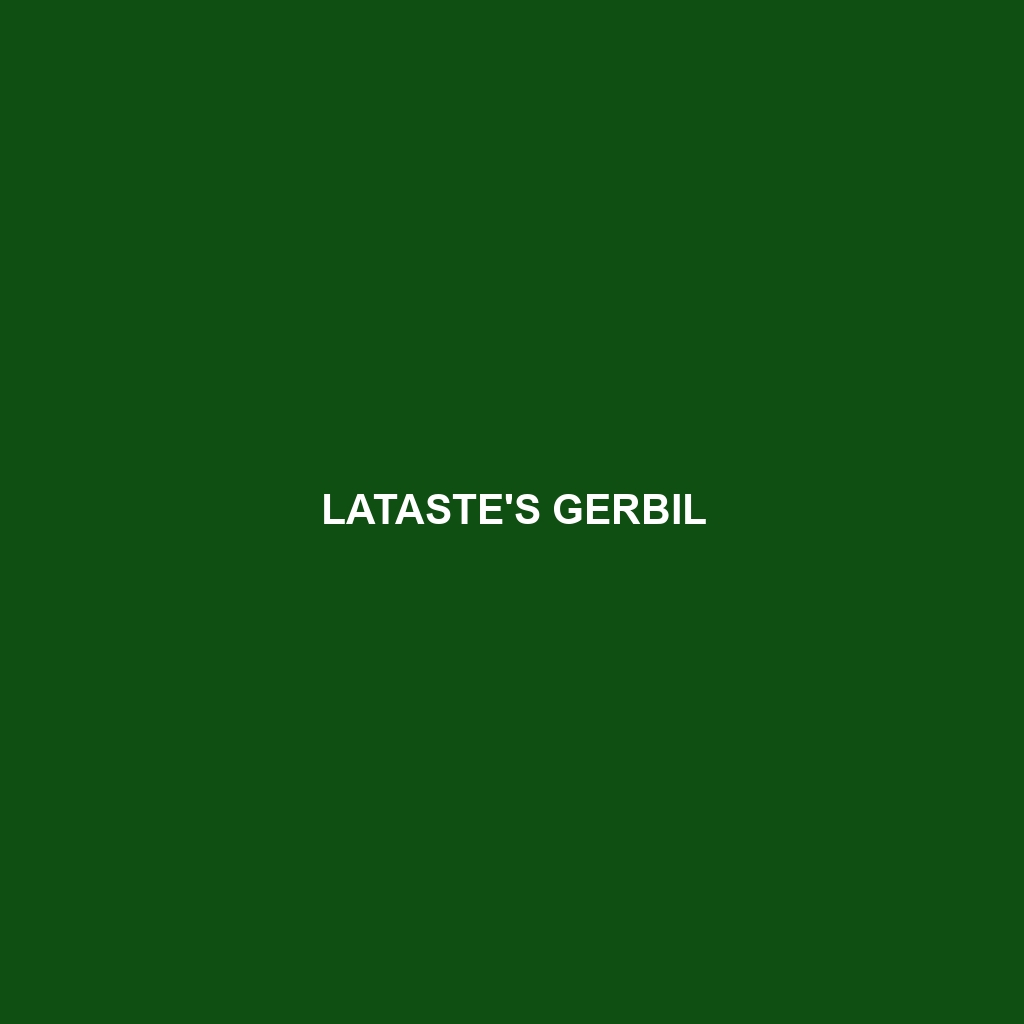Lataste’s Gerbil ()
Common Name: Lataste’s Gerbil
Scientific Name:
Habitat
Lataste’s Gerbil is primarily found in the arid regions of North Africa, notably in Morocco, Algeria, and Tunisia. These gerbils thrive in sandy deserts and dry grasslands, preferring areas with loose soil where they can easily dig their burrows. The species is well-adapted to the extreme temperatures characteristic of these environments.
Physical Characteristics
Lataste’s Gerbil typically measures between 10 to 13 cm in body length, with a tail that is equally long or slightly longer. Its fur is sandy brown to yellowish, providing excellent camouflage against the desert landscape. Distinctive features include large eyes adapted for night vision and long, tufted tails that help with balance as they navigate their habitat.
Behavior
These gerbils exhibit fascinating behaviors, including burrowing, which serves as both a protective measure and a way to regulate temperature. Lataste’s Gerbil is crepuscular, being most active during dawn and dusk, which minimizes exposure to daytime heat. They also exhibit social behaviors, often living in family groups, which enhances their foraging efficiency and protection from predators.
Diet
Lataste’s Gerbil primarily feeds on seeds, roots, and tubers, showing a preference for plant matter available in their dry habitats. Their diet includes various grains and desert flora, helping them survive in nutrient-poor soil. This gerbil is adept at foraging and has developed feeding habits that allow it to maximize its intake while minimizing time spent exposed to potential predators.
Reproduction
Breeding typically occurs in late spring to early summer when environmental conditions are favorable. Female Lataste’s Gerbils give birth to litters ranging from 2 to 8 offspring after a gestation period of about 24 days. The young are born blind and hairless, relying on maternal care during their early weeks. Weaning occurs at about 4 weeks, after which they begin to explore their surroundings and develop independence.
Conservation Status
Currently, the conservation status of Lataste’s Gerbil is classified as ‘Least Concern’ by the IUCN, though habitat loss and climate change could pose future threats. Ongoing monitoring is essential to ensure the species remains stable in its natural environments.
Interesting Facts
Lataste’s Gerbil is known for its energetic behavior and ability to leap distances up to three times its body length. Interestingly, they have a unique method of communication using a series of chirps and squeaks to convey signals within their social groups, making them highly social yet elusive creatures.
Role in Ecosystem
Lataste’s Gerbil plays a crucial role in its ecosystem as both a herbivore and prey species. By foraging on seeds and plants, they assist in seed dispersal, promoting plant diversity in their arid habitats. They are also an important food source for various predators, contributing to the ecological balance in their environment.
